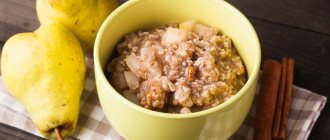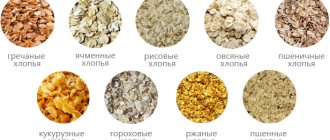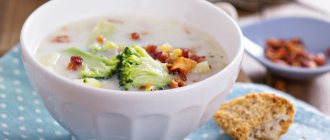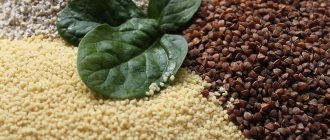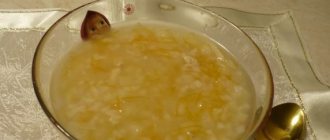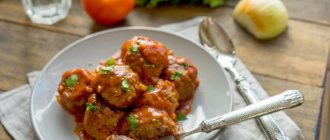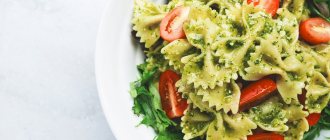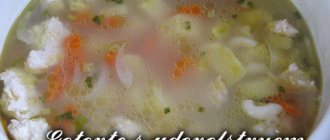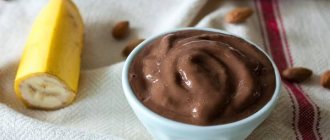We all know about the benefits of buckwheat and the love of the Russian people for it. And of course, we don’t have to doubt this. There is even a saying: “Buckwheat porridge praises itself.” After all, by eating just one serving of such wonderful porridge in the morning, we are charged with vivacity, energy and begin to greet the new day fully armed.
This is all for good reason; in terms of nutritional value, such porridge is not inferior to either meat or potatoes and is significantly superior to them in digestibility. Also, buckwheat, despite its nutritional value, is still a dietary product. It is based on easily digestible proteins with many microelements and vitamins, as well as a huge amount of fiber. It was for such a rich composition that she was nicknamed “the queen of cereals.”
There are a huge number of options for preparing buckwheat porridge. Cooking in water, with milk, with raisins, with or without sugar, with meat, mushrooms or vegetables. It can serve as a main course or not. Preparing this porridge is quite simple, but to ruin it you have to try very hard. We can only diversify our buckwheat diet, because, as you know, consistency becomes boring.
Main advantages of the product
Buckwheat is good for both children and adults to eat. The herbaceous plant is not a cereal, so the composition is guaranteed to be gluten-free. That is why the recipe for buckwheat porridge for babies is completely safe, because it cannot cause allergies or other disturbances in the gastrointestinal tract. Gluten is poorly digested, so products containing it should not be used as first complementary foods.
Buckwheat porridge provides the body with a sufficient amount of vitamins and minerals.
It has the following positive properties:
- Provides the body with all the necessary components for proper growth and development.
- Normalizes metabolic processes.
- Has a positive effect on the functioning of the heart and blood vessels.
- Makes the baby's muscles strong and stable.
- Milk porridge with prunes relieves hunger for a long time and does not lead to excess weight gain.
- Improves the functioning of the endocrine system.
- It introduces into the circulatory system all the necessary components that are used to stabilize blood pressure.
- Reduces blood glucose levels.
- Helps a weakened body cope with anemia and heart failure.
- Helps the immune system fight colds.
- Improves the condition of hair and nails.
- Has a positive effect on mood.
- Promotes proper growth of teeth and nails.
Buckwheat flour is used to prepare products that are quickly digested and do not lead to stomach upset. If you prepare the composition with milk, the risk of bloating and bowel dysfunction increases. For a newborn’s body, it is important to follow basic preparation standards. The situation may worsen in case of violation of storage standards and failure to wash grains.
Any buckwheat dish can be made not only tasty, but also healthy
The value of buckwheat
The main value of the cereal is that it does not contain modified genes and is grown without the use of chemicals. Buckwheat is a strong plant that displaces weeds well; coping with diseases and insects independently. Therefore, its cultivation does not require chemical or genetic intervention.
Another interesting fact about buckwheat is that it does not contain gluten, which means that the chance of developing an allergy to buckwheat in adults or children is minimal. Many people know about its benefits, but they cannot say what benefits buckwheat has for the body other than its high iron content. The beneficial effect on the human body is:
- Phosphorus, copper and B vitamins. They ensure the normal development of the child, have a calming effect, normalize the functioning of the nervous system, sleep and mood;
- Folic acid, necessary for the prevention and treatment of anemia, activation of blood formation and production of red blood cells;
- Large amounts of calcium, silicon, phosphorus, which replenish the body’s need for minerals, strengthen tooth and bone tissue;
- Potassium and magnesium, which improve the functioning of the cardiovascular system;
- Proteins and amino acids involved in the synthesis of cells and tissues;
- Vitamins A and E. They remove bad cholesterol, toxins, heavy metals and radionuclides;
- Zinc, recommended for dermatitis, as well as to improve the growth and condition of hair and nails;
- Fiber, which stimulates intestinal function;
- The ratio of vitamins and minerals, which not only strengthens the body, but also improves immunity.
Buckwheat porridge gives you a feeling of fullness for a long time, since the carbohydrates included in its composition are slow-burning. Low calorie content makes it indispensable in dietary nutrition for obesity, diabetes, hypertension, atherosclerosis, etc.
Harm and contraindications
Buckwheat is hypoallergenic and is recommended for a gluten-free diet, as well as for first feeding.
However, whether a baby can have a food allergy to buckwheat depends on several factors. The first of them is the amount of porridge eaten. Cereals are high in protein, which replaces animal protein. Therefore, overeating can cause a negative reaction to proteins. Also, an allergy to dairy-free buckwheat porridge may develop in a baby if there was already a similar disease in the family or if the mother eats buckwheat in large quantities during breastfeeding.
The main symptoms of an allergic reaction include:
- The appearance of redness on the skin, accompanied by itching and peeling;
- Runny nose;
- Redness of the eyes;
- Colic or increased gas formation;
- Digestive upset in the form of diarrhea.
If these signs appear, it is necessary to exclude the product from the baby’s diet. Buckwheat can be reintroduced into the diet only after 3-4 weeks.
An allergy to cereal in newborns can be caused not so much by buckwheat, but by accompanying odors or inclusions. This applies to cereals stored next to household chemicals, tobacco, strong-smelling foods, spices, etc.
Allergy to buckwheat is a very rare occurrence
Constipation from buckwheat porridge is possible, but rare. Buckwheat is contraindicated for children only with congenital kidney diseases, because contains a lot of protein and minerals.
Features of introducing the product into the diet
It is allowed to prepare buckwheat porridge for a baby no earlier than he is seven months old. For the first time, it is allowed to give no more than half a teaspoon of the product. Over the next 48 hours, you should carefully monitor the baby’s body’s reaction.
Every day you can double the dose until the portion reaches 150 grams. Buckwheat dishes are allowed to be eaten no more than four times a week. For a child per year, the daily norm should not exceed two hundred grams.
Even porridge with water will have to be abandoned if the baby experiences deterioration in stool or redness on the skin. In this case, the product is excluded, and you should immediately consult a pediatrician.
At first, you should give your baby only dairy-free porridge. The milk version can only be used if the child is already ten months old. However, it is important to be extremely attentive to the condition of the baby. Milk puts stress on the stomach and intestines. Some kids can only digest it from the age of two.
Infants should not put salt and pepper in their dishes. Only a small amount of butter is allowed. You can add breast milk or formula, which the baby feeds, to the finished dish. Additionally, fruits and vegetables can be added to the dish. If the child is older, then it is allowed to add meat. Each ingredient must first be introduced into the diet independently.
Constipation can be caused by buckwheat that has been stored for a long time in the same compartment with household chemicals. Such cereals accumulate poisons in their structure and can lead to serious food poisoning.
Before starting the cooking process, the cereal must be thoroughly washed under running water. The dish itself can be given to the baby only if it is at room temperature. The dish can be stored in the refrigerator for no more than 24 hours. It is best to offer your baby a fresh composition each time.
Today there is a wide range of complementary foods that are sold in ready-made form. Before using them, you should check the expiration dates and composition.
A child should not be given porridge whose packaging has been damaged. Ready-made versions of the dish may contain prebiotics, vitamins and minerals. You should choose a brand that has a sufficient number of positive reviews. It is not allowed to give your baby foods containing gluten. Parents are advised to buy cereals without soy and coconut oil.
How to choose porridge for first feeding
Among cereals, buckwheat is one of those recommended for first complementary feeding, since it is an environmentally friendly product. For the development of newborns, the chemical composition of the cereal, the ease of the product for the digestive system, as well as a long-term feeling of satiety are important. It is advisable to introduce complementary foods no earlier than six months after birth. This is explained by the beginning of active growth and development and the fact that mother’s milk at this time is no longer able to meet all the needs of the baby’s body. A child’s readiness for complementary feeding can be determined by his interest in adult food and the spoon offered.
From how many months old can a child be given buckwheat porridge depends on the baby’s development and his readiness for a new product. If there are no individual contraindications, then dairy-free porridge can be introduced as early as 6 months. Starting complementary feeding does not cancel breastfeeding: it is important to supplement the baby’s feeding after each meal.
Buckwheat flour for first feeding - it’s better to make it yourself
What cereals are best to choose for the first complementary feeding:
- rice;
- corn;
- millet;
- oatmeal;
- buckwheat
Doctors do not recommend starting with semolina because it is rich in gluten and can provoke the development of gastrointestinal diseases.
From 6 months of age, newborns are given only dairy-free porridge. At this age, children usually have an allergy to milk protein. The absence of milk also allows you to get used to the taste of the cereal, which will save you from problems in the future.
Porridge for complementary feeding can be prepared from cereals, buckwheat flour or ready-made infant formula. When choosing, it is better to give preference to light cereals in transparent packaging. This will allow you to choose buckwheat that is dust-free, clean and rich in vitamins - dark color indicates low quality and long-term heat treatment. The shelf life for buckwheat should not exceed 20 months.
Basics of proper cooking
Many parents are faced with the question of how to cook buckwheat porridge for babies? The optimal ratio is 5 grams of buckwheat per 100 ml of water. After cooking, the composition should be similar to mashed potatoes. Parents should not forget that at this age the baby does not yet know how to chew. Lumps are also considered dangerous. Only with age can you cook porridge in a thicker form.
We prepare complementary foods from one teaspoon of cereal. For babies it is allowed to use only high-grade buckwheat. It is easy to distinguish: it is light in color. This volume must be rinsed under running water and dried thoroughly. Only after this should the grinding procedure be carried out in a blender or coffee grinder.
The porridge should be liquid, so add a teaspoon of cereal to half a glass of water. The cooking procedure lasts at least fifteen minutes. It is allowed to add 10 ml of the mixture to the resulting composition. It can be replaced with breast milk. Pediatricians allow adding a few drops of vegetable or butter to the composition.
During the cooking process, it is recommended to also add vegetables if the baby is already older. Carrots, onions, zucchini, greens or pumpkin can be used as additional ingredients. Each component must first be prepared separately. Only after this are they mixed with porridge and crushed in a blender. Vegetables and fruits are not allowed to be fried. The best way to do this is to use steaming at home.
If the baby is already nine months old, then it is allowed to add additional meat or minced meat to the dish. It is best to opt for beef, chicken or rabbit. Poultry meat is quickly digested in the stomach. Children under three years of age are not allowed to give offal. When your baby is one year old, you can already prepare dishes with sugar, salt or pepper.
Allergies to buckwheat porridge in infants are rare, so it is recommended to include the product in the diet of every child
Methods for preparing buckwheat for babies
For a baby, the first food is puree, so if the porridge is cooked from whole grains, it must be crushed using a submersible blender. The method of preparation depends on the type of product chosen: it is advisable to pre-dry the product, and you can add rice or 1/2 tsp to the buckwheat flour for taste. semolina.
Porridge from pureed cereals
Before preparing baby porridge, buckwheat is sorted, removing impurities and low-quality grains, washed with warm running water and dried in the oven. Milk is not added to porridge for the first feeding. How to cook buckwheat correctly:
- Pour 250 ml of water into a container;
- Place on fire and bring to a boil;
- Add 50 g of cereal;
- Cook until done over low heat.
The remaining water should be drained, the porridge should be cooled and crushed using a blender. The porridge can be diluted with boiled water or expressed milk to the desired consistency.
Preparation of semi-finished product
When choosing ready-made buckwheat porridge for complementary feeding, you need to make sure that there are no preservatives, soy, sugar, salt, coconut, rapeseed or palm oil, flavorings and lecithin. Dairy-free porridge “Malyutka” meets the requirements of pediatricians and has a pleasant taste and delicate texture. If the child is bottle-fed, then “Malyutka” is allowed to be introduced into complementary foods at 4 months.
Chemical composition of 100 g of product:
- 11.4 g protein;
- 2.7 g fat;
- 76.3 g carbohydrates;
- Calorie content - 374 kcal.
Physical composition of porridge:
- Buckwheat flour;
- Minerals (zinc, copper, iodine, phosphorus, sodium, manganese, etc.);
- Vitamins (ascorbic acid, tocopherol, biotin, pyridoxine, niacin, folic acid, thiamine, etc.);
- Maltodextrin is a sugar substitute and flavor enhancer made from corn or potato starch.
“Malyutka” porridge for babies on water is easy to prepare:
- 30 g of the mixture is poured into 150 ml of hot (not boiling water) water;
- Leave for 3-4 minutes.
The optimal water temperature is 45-60°C. When using a liquid at a higher temperature, beneficial substances are destroyed. If buckwheat is not used for the first complementary feeding, then it is allowed to be introduced into the diet from 7 months: the mixture may contain traces of gluten and cause allergies.
How to prepare complementary foods from buckwheat flour
For the first feeding, you can cook buckwheat porridge from flour in water. It turns out to be more tender and has a softer effect on the baby’s stomach. Buckwheat flour can be bought or ground at home from dried and clean cereals using a coffee grinder. If you grind buckwheat flakes rather than cereal, the size of the grains will be smaller and resemble regular coarse flour. The combination of ground buckwheat and oat flakes is most beneficial for babies.
How to prepare dairy-free buckwheat porridge for first feeding:
- Pour 100 ml of water into a container (the walls and bottom should be thick);
- Add 1 tsp. flour;
- Cook over low heat for about 20 minutes;
- Leave covered for 5-7 minutes.
Liquid porridge can be drunk from a special sippy cup. To improve the taste, you can add fruit puree approved for baby food. After 7 months, porridge can be supplemented with low-fat milk, and porridge made from flour for a one-year-old child is cooked with a small amount of butter, salt and sugar. The taste of the dish will be improved by adding rice, corn or oatmeal.
Delicious and healthy recipes
Buckwheat with vegetables
One of the first complementary foods can be buckwheat with boiled vegetables.
We recommend reading: How to cook semolina porridge for babies
To prepare it you will need:
- 300 grams of buckwheat;
- some carrots, pumpkin, onions;
- two drops of vegetable oil.
Wash the vegetables thoroughly and cut them. Next, the resulting mixture must be stewed using vegetable oil and crushed with a blender. Vegetables should be mixed with porridge and filled with water. To achieve a uniform consistency, they will need to simmer for another four minutes. You can achieve uniformity of the dish by using a mixer. However, it can be served in this form.
Casserole
Ingredients for buckwheat porridge casserole:
- 100 grams of fresh cottage cheese;
- 4 tbsp. l. buckwheat;
- 2 fresh chicken eggs;
- 100 grams of sour cream;
- 2 tsp. Sahara.
Before cooking, the cereal must be sorted and cooked. At the next stage, the resulting dish is mixed with cottage cheese. At the same time, beat the eggs with a mixer with sour cream and sugar. Next, add 0.5 of the total volume of buckwheat to the eggs and mix. The resulting composition is placed in a baking vessel. The remaining mixture is placed on top. The mass is baked in the oven for at least twenty minutes.
Buckwheat porridge with minced meat
You can make buckwheat yourself at home with the addition of a small amount of minced meat:
- 400 grams of cereal;
- 100 grams of minced meat;
- one piece each of carrots, onions;
- three drops of oil.
Peel the vegetables and simmer for several minutes. After this, add the minced meat and continue the process until it is ready. At the next stage, the vegetables are placed in pots and cereals are added. The container should be filled with boiling water to the brim. The baking process must be continued for an hour in the oven.
Buckwheat with the addition of various nuts can be given to the baby if he is already two years old
Porridge with nuts
Ingredients:
- 200 grams of cereal;
- 400 ml liquid;
- one onion;
- several walnuts crushed in a coffee grinder;
- 2 drops of vegetable oil.
Before starting the cooking process, nuts should be soaked in cold water for 1.5 hours. After this they are crushed. The same process should be carried out with cereals and boiled for at least 15 minutes. The onion is peeled and stewed in a frying pan along with nuts for 10 minutes. After this, it is transferred to the porridge.
Buckwheat is a universal product. It is included in delicious and healthy dishes for babies.
Milk buckwheat porridge recipes
Milk porridge is prepared for children 12 months of age and older. It is better to use whole homemade milk, and if purchased, it should be fresh and from a reliable manufacturer.
Classic recipe
Buckwheat porridge with milk for a child is prepared based on the following proportions:
- A glass of cereal;
- 500 ml water;
- 300 ml milk;
- 1/2 tsp. Sahara.
If you make it without milk, then this porridge is also suitable for babies. How to prepare: pour clean cereal into boiling water, cook for about 5 minutes, pour in warm milk with sugar. The container is closed with a lid. Bring to readiness over low heat. You can add pieces of fruit, butter or berry puree to the finished dish.
You can cook buckwheat porridge for a child with milk in a slow cooker. To do this, pour the cereal into a bowl, fill it with water and turn on the pilaf cooking program. When the liquid has evaporated, add milk, sugar and salt. The finished porridge is seasoned with butter. To make the dish aromatic, you can add a little vanillin.
Porridge from crushed cereals
In Russian kindergartens, porridge is often cooked from crushed cereals. It turns out more tender and more pleasant to the taste than from core. To prepare you need to take:
- A glass of crushed buckwheat;
- 2.5 glasses of water;
- 2 glasses of milk;
- Salt and sugar - to taste;
- A few grams of butter.
The part is washed and dried, then added to boiling water. The cereal is cooked under the lid for 20-25 minutes. Then pour in the milk, stir and boil. Before serving, season with butter.
Milk buckwheat in a pot
An unusual and tasty way to cook buckwheat in the oven using a clay pot. To do this, take a couple of glasses of clean cereal, 4 glasses of water and 2 glasses of milk, a little salt, a couple of tablespoons of honey and butter. Water is poured into the pots and cereals and salt are added. Stir and place in the oven (190°C) for half an hour. Then add butter and milk, and put it back in the oven for 10-15 minutes. When the porridge is ready, it is seasoned with honey. You can also add some raisins and dried apricots for taste. Place the pot in the oven for a few more minutes.
Fruit and milk porridge
This unusual milk buckwheat will allow you to diversify your child’s menu. To prepare you will need:
- 500 ml each of water and milk;
- 250 g buckwheat;
- 200 g of fruits (bananas, apples, pears, guava, plums, kiwi, peaches, etc.);
- A little sugar and butter.
The washed and dried cereals are fried for several minutes in a hot frying pan without adding oil. Then pour it into a thick-bottomed bowl, fill it with water and put it on the fire. The boiled water is drained and milk is added to the cereal. Bring over medium heat until cooked, and then add finely chopped fruit and sugar. Along with sugar, you can add a little vanillin, butter and salt.
You can prepare milk porridge with pumpkin in the same way. The vegetable is placed in the pan 5-7 minutes before the cereal is ready.
Buckwheat dishes for children over one year old
For children over one year old, buckwheat is prepared as a side dish for meat or fish dishes, flour is used in baking, and whole grains are added to soups.
How to properly cook buckwheat as a side dish: rinse 1 cup of cereal, dry and fry in a hot frying pan without oil for several minutes. Then bring 2 glasses of water to a boil, add buckwheat, add a little sugar and salt to taste. Close the lid and leave on low heat until done. You can make a delicious gravy for buckwheat without meat from vegetables. To do this, take a carrot, an onion, a small zucchini, several medium tomatoes, and a couple of cloves of garlic. Vegetables are peeled and cut into cubes. Fry the vegetables in a small amount of vegetable oil until golden brown. It is better to first scald the tomatoes with boiling water and remove the skin, chop them, mix with crushed garlic and add to the vegetables. Simmer for about 5 minutes, then pour in 100 ml of milk. Bring to a boil, reduce heat and leave covered until done.
Meatball soup
For 2.5 liters of water take:
- A couple of medium potatoes;
- Carrot;
- Onion;
- 1/3 cup buckwheat;
- 250 g of minced veal, turkey, chicken or rabbit;
- 200 g cabbage;
- Tomato.
Place diced potatoes into a pan of boiling water; when the water boils again, add buckwheat, shredded cabbage and meatballs. Onions, tomatoes and grated carrots are sautéed in sunflower oil. The prepared vegetables are transferred to a saucepan, salted and cooked until tender. Buckwheat soup with meatballs can be seasoned with fresh herbs before serving.
Chicken bouillon
Buckwheat soup with chicken, intended for children, has a low-fat broth and the absence of a large number of spices. Products needed for cooking are:
- Potato;
- Cereals;
- Onions and carrots;
- Chicken breast.
Wash the chicken, cut into small cubes, place in salted water and cook until half cooked. Then add cereal and potatoes. Grate the carrots on a fine grater, chop the onion. If desired, you can fry the vegetables, or you can put them fresh in the pan. Cook until the vegetables are ready. The soup can be blended with a small amount of butter until pureed or served as a regular broth.
Pancakes and desserts
What to prepare from the children's menu for the holidays: tender cottage cheese soufflé, fragrant cookies and pancakes with different fillings. These treats are not only delicious, but also healthy, and are low in calories, nutritious and easy on the stomach.
Curd soufflé
Rub 250 g of fresh low-fat cottage cheese through a sieve, add a couple of yolks and mix thoroughly. Wash buckwheat (100 g), dry and grind in a coffee grinder. Add buckwheat and 100 g of butter to boiling milk (400 ml). Cook over low heat for about 5 minutes. Mix cooled buckwheat with cottage cheese, add 2 tbsp. fine sugar or powdered sugar, a couple of egg whites whipped to a strong foam and mix gently with a silicone spatula. Transfer the resulting fluffy mass into a baking dish, greased with a small amount of oil. Cook in the oven at 180°C for no more than 20 minutes.
Cookies without milk
Delicious cookies made from buckwheat flour with bran without eggs and milk are prepared from:
- A glass of cereal;
- 150 ml of fresh low-fat kefir;
- Tbsp. honey and rye bran;
- Ch.l. olive oil;
- Pairs of sweet apples;
- A small amount of sesame seeds.
Buckwheat must be ground and mixed with grated apples and other products. If your child is allergic to honey, you can replace this ingredient with sweet syrup. Mix everything: the mass should be moderately viscous and sticky. Leave the dough to rest for 20-30 minutes, then divide into several small balls. If the dough crumbles, pour in a little kefir. From each ball, 2-3 thin cakes are formed, sprinkled with sesame seeds and placed in the oven (150 °C) for an hour.
Chocolate cookies
To bake chocolate buckwheat cookies, you need to mix 200 g of flour, 60 g of cocoa powder, 90 g of granulated sugar, a bag of baking powder and a bag of vanillin. Then 300 g of sour cream (20% fat content) and 45 ml of vegetable oil are added to the dry mixture. The dough should be crumbly and soft. Thin biscuits are rolled out from the finished dough, and a crumb of almonds or peanuts is placed in the center of each of them. Bake cookies for 20-30 minutes in a well-heated oven (at least 190 °C).
Sugar-free biscuits
Making healthy sugar-free cookies using this recipe is simple: you need to take 200 g of buckwheat flour and mix with 3 tbsp. cocoa powder, 0.5 tsp. soda and 100 g of chopped dates. Add 350 ml of milk and mix well with a blender until a homogeneous and elastic dough is obtained. The finished and rested dough is rolled out into the desired shape and baked for about 10 minutes at 190 °C.
Buckwheat galette stuffed with fish, eggs, cheese and vegetables
Pancakes with sweet filling
The taste of pancakes will be better if you use a mixture of buckwheat and wheat flour in equal proportions. 5 g of dry yeast are diluted in 2 glasses of warm milk and given time to come to life. After 15 minutes, add a glass of buckwheat flour and leave it warm for 40 minutes. Then shake the dough, add a glass of wheat flour, a glass of milk and put it back into the heat for 20-30 minutes. Add 3 eggs, 2 tbsp, one at a time, into the finished dough. sugar and a little vanilla. Beat everything well with a whisk. Fry pancakes in a well-heated frying pan. For the filling you can take sweet curd mass, homemade jam, condensed milk, chocolate syrup, fruit salad or custard.
Buckwheat is one of the healthiest, and its beneficial effect on the body is explained by the absence of gluten and a rich vitamin-mineral complex. Doctors allow the use of buckwheat for the first complementary foods for babies from 6-7 months. Porridge can be prepared from whole grains, flour, crushed grains or a ready-made mixture. The first buckwheat porridge should be dairy-free, but over time milk, butter, sugar, and fruit are added to it. There are many options for preparing buckwheat for children one year and older: healthy and light soups are made from the grain, and cooked as a side dish for poultry or meat. Buckwheat flour is often added to various baked goods - this makes it easier to digest and enriched with essential fiber, vitamins and minerals.

